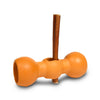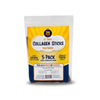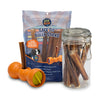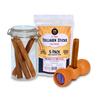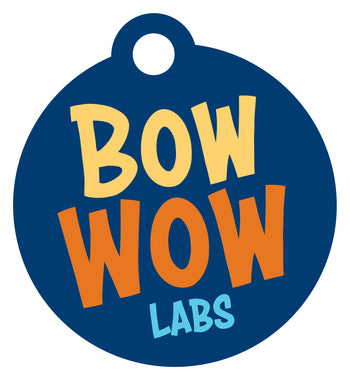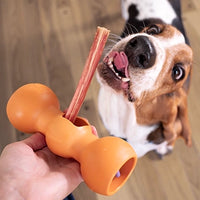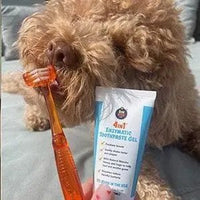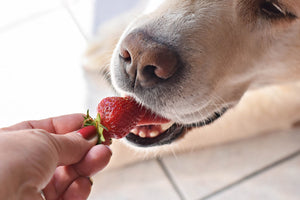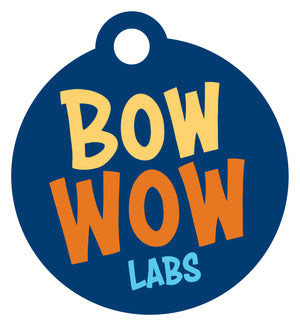Updated February 2, 2024
Recently, we put together a helpful step-by-step guide on how to brush your dog’s teeth. We thought it might be equally helpful to learn why good doggie dental hygiene is so very important.
The gist: Like us, good oral health is linked to good whole body health.
A Few Interesting Facts About Dog’s Dental and Overall Health
- Dogs' bodies are designed to eat the entirety of the prey they would have killed in nature, which included fur, bones, and strong elastic tissue. This process would provide a natural brushing effect on their teeth.
- The bacteria found in the mouth (and the toxins that result from it) destroy teeth and gums and can be directly related to heart health. Lack of proper preventative oral care can have major effects on the body as the bacteria and toxins are breathed into the lungs, swallowed into the stomach and intestines, and enter the bloodstream where it can affect distant organs every time the dog or cat eats!
- The American Veterinary Medical Association (AVMA) indicates that 80% of dogs have some degree of oral or periodontal disease by the young age of 3 years old.
- As pets age, the constant overload of bacteria and toxins on the body organs wreak havoc on the body systems and prevent good health.
Daily brushing is the number one thing you can do to offset bacterial build up in your dog’s mouth and improve their overall health. But there’s more you can do. Combine the following recommendations with a new brushing routine, and you’re on your way.
More Dog Oral Health Recommendations
Start now
So what if your dog hasn’t had their teeth brushed since puppyhood? Begin the routine now and your dog’s health will be positively impacted. Get a head start by talking with your vet to see if your dog needs a dental cleaning to remove existing plaque and tartar build up. Many dog owners find that once they’ve established a daily oral routine the initial cleaning is all they need! This, of course, depends on the individual dog, but it’s sure encouraging. Here’s our step-by-step guide on getting started.
Let your dog chew
Chewing is a natural behavior that can help keep teeth clean. Aim for a minimum of three 30-minute chew sessions per week to really help prevent plaque and tartar formation. Make sure any long-term chew is sized appropriately for your dog. If you have a very aggressive chewer, be sure to switch up the types of chew you offer to avoid your dog from wearing his teeth down.

Look for hard, chewable natural items to exercise the teeth, gums, and jaw. Products like:
- Bully sticks
- Epic Chews™
- Natural shed split antlers
- Yak-milk cheese chews
- Raw beef marrow or knuckle bones (never feed cooked bones and stay away from bones that are not size-appropriate for your dog)
- Dental chews with enzymes (these chews often will not provide the recommended 30-minute chew time but they do help break down plaque and are a good addition. Please note that relying on these chews for total preventative care is not recommended but should be part of the regimen outlined here.)
Feed them a better diet
Poor diets can contribute to a lack of mineral salts in the saliva that contribute to tartar. Feeding a diet appropriate for the carnivorous canine species that includes fresh foods rich in nutrients is best. We also recommend adding supplements to their daily meals.
Add kelp to their bowl! Seaweed has specific eznymes that break down plaque and inhibits the growth of bacteria.
(*Kelp is also an active ingredient in our Epic Chew!)
Examine their teeth for early detection
While you’re brushing your dog’s teeth smell their breath, look at their individual teeth, examine their gums and don’t forget to look at their face! Contact your veterinarian immediately if you notice any swelling, foul odors, inflamed/red gums (gums should be light pink in color) or feel any lumps or bumps along their external jaw line.

A Conversation with Dr. Bergmann about Brushing Your Dog’s Teeth
Recently we chatted with our veterinarian friend Dr. David Bergmann, DVM, about how and why to brush your dog’s teeth. For years, Dr. Bergmann has helped his patients’ humans get better acquainted with their dog’s oral health. Not only is he knowledgeable about the topic, he also understands the real-life hurdles we all encounter along the way of developing new habits.
Here, Dr. Bergmann offers a few new perspectives that can help you break out the doggie toothbrush on the daily:
Bow Wow Labs: How do you start the oral health conversation with your clients?
David Bergmann: My standard approach to the topic of dental and periodontal disease is to emphasize that cats and dogs develop plaque, the soft bacterial biofilm on their teeth, just the same as people do. Basically, they’re just like us. That plaque that builds up calcifies into tartar, a cement-like substance, within 48 hours. That’s why we recommend brushing their dog’s teeth daily, just like they do with their own teeth. However, I feel a multi-modal approach which incorporates both brushing and other means of plaque-prevention seems to be the most realistic option for the majority of my clients.
BWL: Do you discuss the connection between oral health and overall health?
DB: I do. Much of the time, because we are talking about the mouth, our tendency is to focus only on that one part of the body. But chronic inflammation that is linked to bacteria in the mouth can lead to other distant organs as well. I discuss the inevitable progression of this disease process throughout the body, but emphasize that proper intervention can have a major impact on slowing it down.
BWL: New habits are hard to form. Is there anything else you share with your clients to convince them that the effort is worth it?
DB: I tell many of my clients about the positive impact a healthier mouth has had on my animal patients and their families. Specifically, my animal patients who have had corrective dental procedures actually seem much happier and more energetic. Their owners notice the same thing. For example, a client mentioned that their dog started to play with toys that they hadn’t touched in years. Some animals like these had advanced periodontal disease and needed to have the diseased teeth extracted.
The change in their mood likely came from having those painful teeth removed so they no longer felt discomfort. I explain that our pets are unable to articulate their discomfort to us. Especially if that pain starts out as mild and progresses slowly, I feel that many pets just adjust to their new condition and accept the discomfort as the new normal.
This is one of the main reasons I stress preventative dental care from an early age and recommend preventative cleanings routinely before my patients get to the point where they’re in pain. No one wants their beloved dog to be in pain, so the correlation between dental care and health (and happiness) usually makes a lot of sense to people.
This article includes excerpts from a conversation between Bow Wow Lab’s Johnna Devereaux and veterinarian, Dr. David Bergmann.
This article is for informational purposes only. It is not, nor is it intended to be, a substitute for professional medical advice, diagnosis, or treatment and should never be relied upon for specific medical advice.
David Bergmann, DVM

His journey as a veterinarian began as a lifelong animal lover and pet owner. He has an uncanny talent for detailed and accurate observation. He puts these skills to work every day helping fellow pet owners take good care of their furry loved ones.Dr. Bergmann has nearly two decades of experience as a small animal practitioner in Rhode Island. In the spring of 2014, he co-founded The Village Veterinary Center in North Kingstown, Rhode Island where he practices general medicine with a focus on dental care. He attended veterinary school at the Atlantic Veterinary College at The University of Prince Edward Island in Canada.
Johnna Devereaux, CPN
 Johnna Devereaux is Bow Wow Lab’s resident certified pet nutritionist. Johnna’s unique perspective and wealth of knowledge about dog nutrition and wellness empowers people to make educated decisions about their pet’s overall nutrition. She brings years of experience in holistic animal health to our Wellness Center. Since 2014, she has owned and operated Fetch RI, a holistic pet store in Rhode Island where she delivers animal nutrition and wellness expertise to her customers daily.
Johnna Devereaux is Bow Wow Lab’s resident certified pet nutritionist. Johnna’s unique perspective and wealth of knowledge about dog nutrition and wellness empowers people to make educated decisions about their pet’s overall nutrition. She brings years of experience in holistic animal health to our Wellness Center. Since 2014, she has owned and operated Fetch RI, a holistic pet store in Rhode Island where she delivers animal nutrition and wellness expertise to her customers daily.
Related Resources
You might also like:



